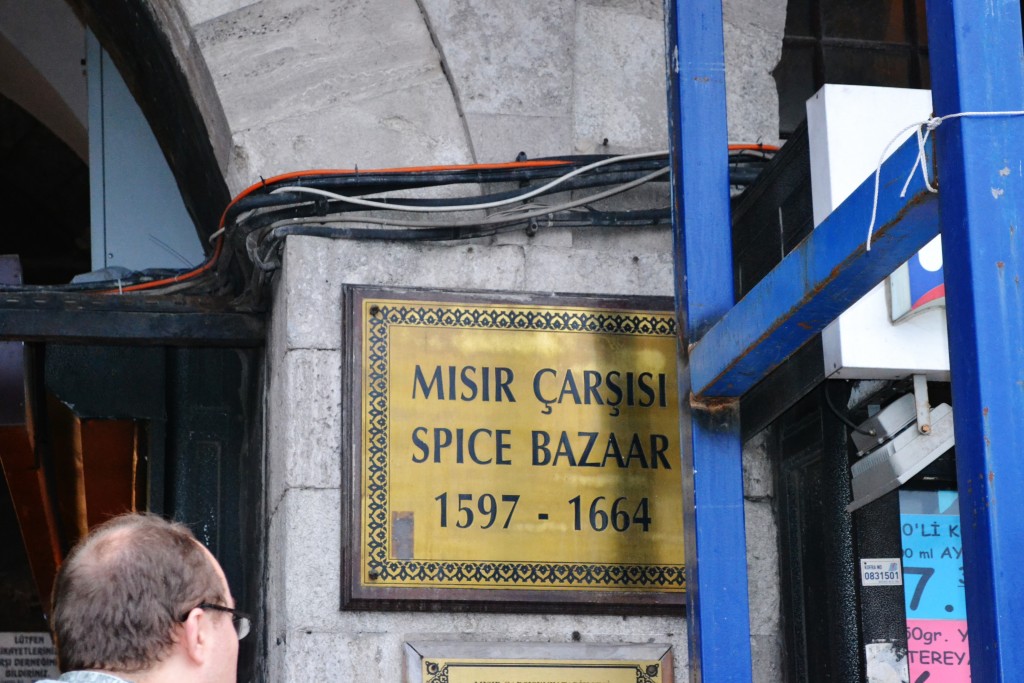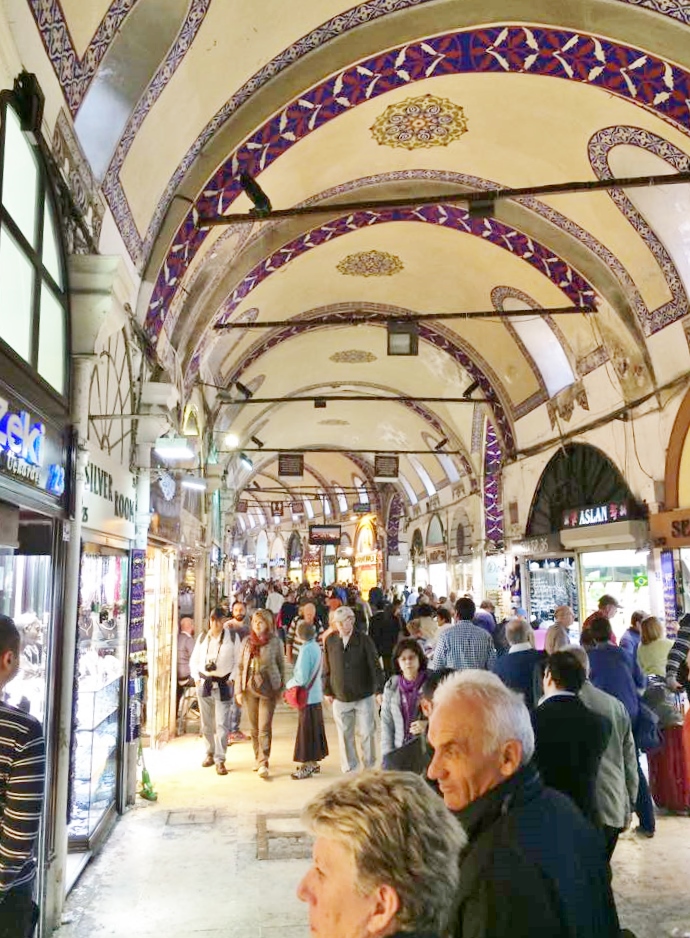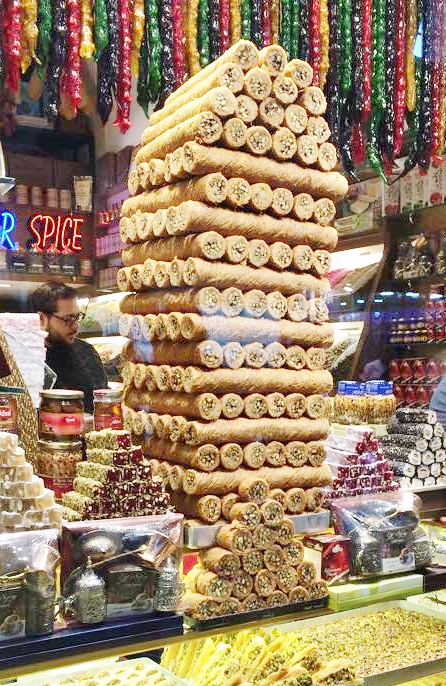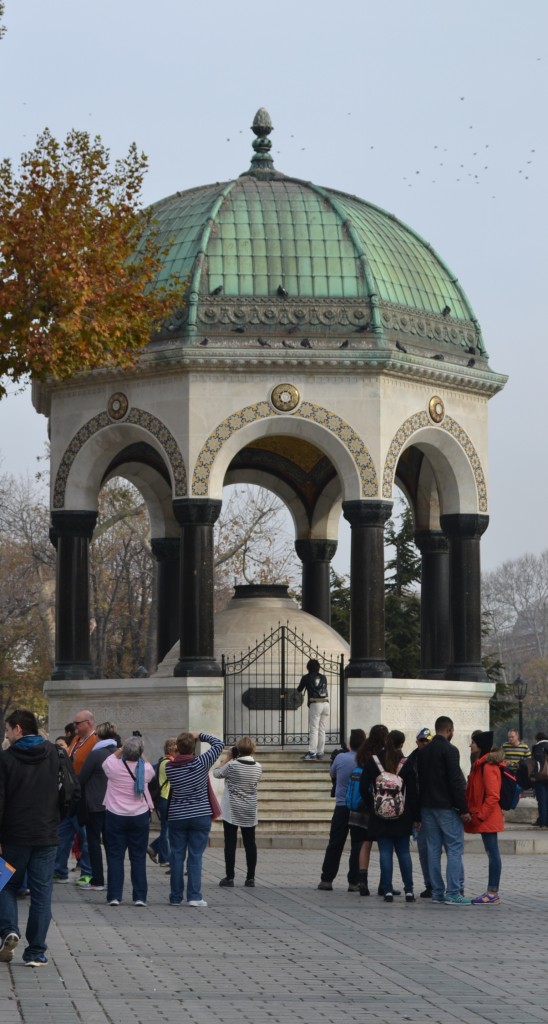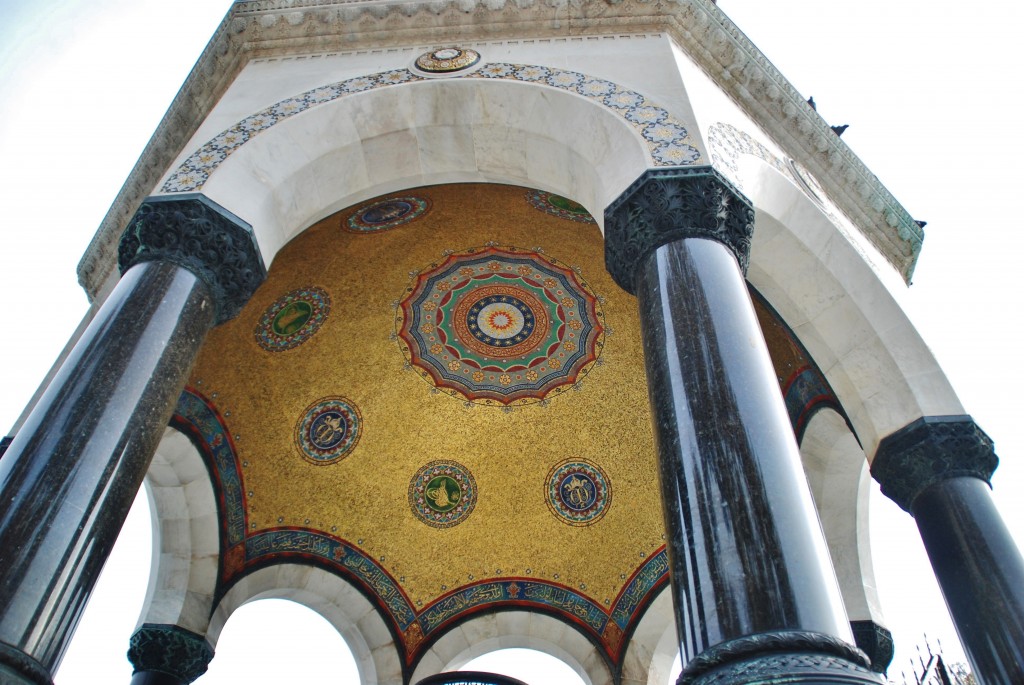Many of us on our tour could not wait to see The Spice Bazaar and Grand Bazaar of Istanbul. Known as the oldest shopping center in the world, the Spice Bazaar has been open since 1597 AD. The locals call this the Misir Carsisi (“Egyptian Bazaar”) because the taxes collected from Egypt funded its building. It began as a market hall and grew over time into an incredible shopping plaza.
The same goods which were once traded hundreds of years ago, continue to be sold in the marketplace today. Such products include natural sponges, beans, dried fruit and vegetables, nuts and confections. Spices are the most popular items for purchase and the Kalmaz Baharat is one store that has continued this tradition for many years. Although the Spice Market is smaller than the Grand Bazaar, it is more colorful and compact.
The Grand Bazaar, one of the more popular sites to visit in Istanbul is a very busy, bustling location for shoppers and merchants. It is a Kapali Carsi “Covered Market” providing over 4,000 shops which can be quite overwhelming with crowds and the cajoling of shopkeepers. Covering an area of nearly 51.7 acres, it is estimated that there are approximately 30,000 locals that are employed at the market.
In addition, many visitors find the market to be complicated because there is not a map of the stalls. What an experience to barter and fill our bags with souvenirs and gifts to take back home.
Towers of baklava in various forms (rolls, triangular, pistachio) and Turkish delight displayed at many of the counters are some of the most popular food purchases. The shop owners were generous with their samples and even added a bonus item to our shopping bags as we left to continue exploring the markets.
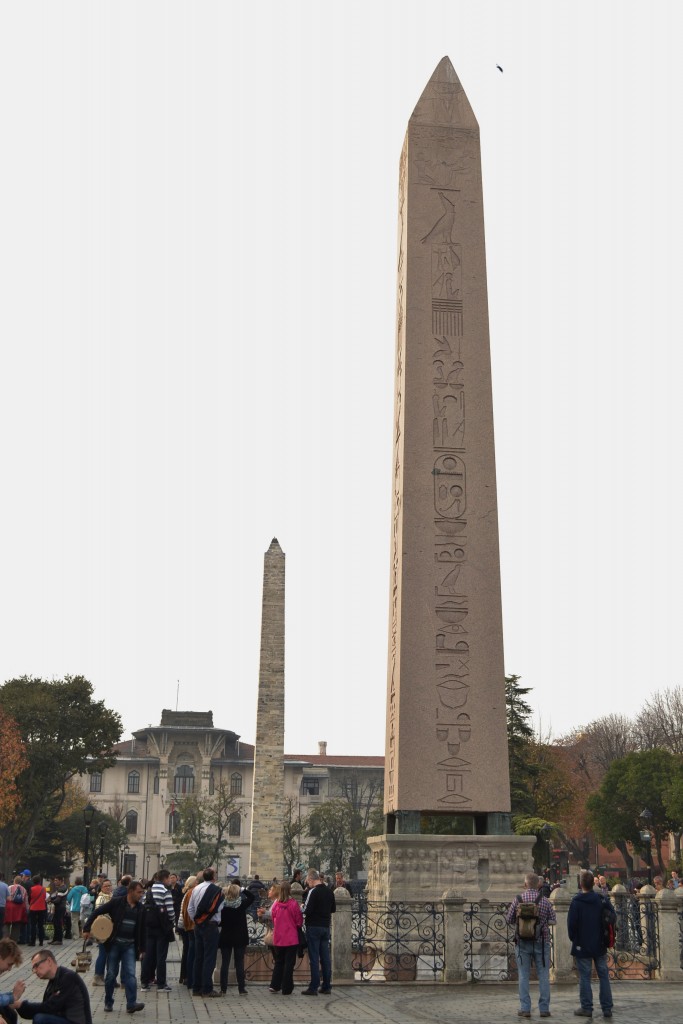
After shopping the Bazaars and losing ourselves among the stalls, we gathered together to visit The Hippodrome (hippo = horse; dromos = race) nearby. Located in the historic district of Sultanahmet, this was the Circus Maximus of Constantinople the home of local chariot racing. Built in 203 AD, the racetrack was converted into a square linking the Hagia Sophia and the Blue Mosque. In 532 AD, it was the location of the Nika revolt against Roman Emperor Justinian I. During the backlash there were fires and assaults against the palace which resulted in the death of 30,000 citizens. Within the space are ancient monuments including the Egyptian Obelisk, the Column of Porphyrogenitus, the Serpentine Column and the German Fountain.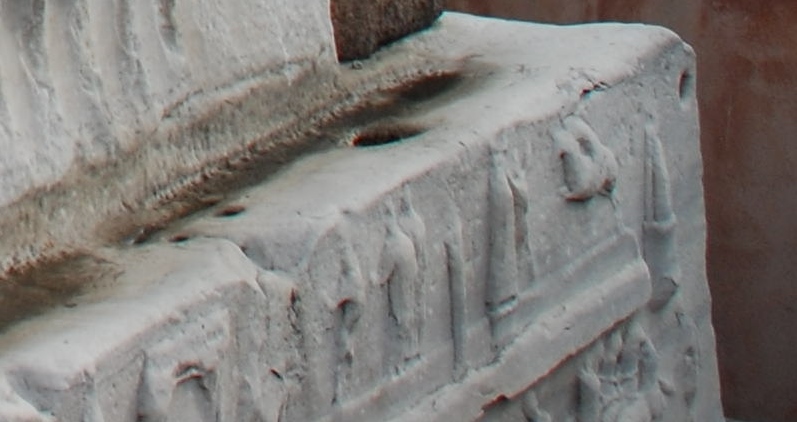
The obelisk was brought by ship from Egypt to Constantinople and sat on the docks for 30 years. Once it was rediscovered, it was finally erected in the Hippodrome’s spina. Below the sculpture of the Emperor and his family, is an image that the Emperor of Theodosius had carved on the pedestal. The carving tells the story of how the obelisk was raised at its current spot and finally secured in place.
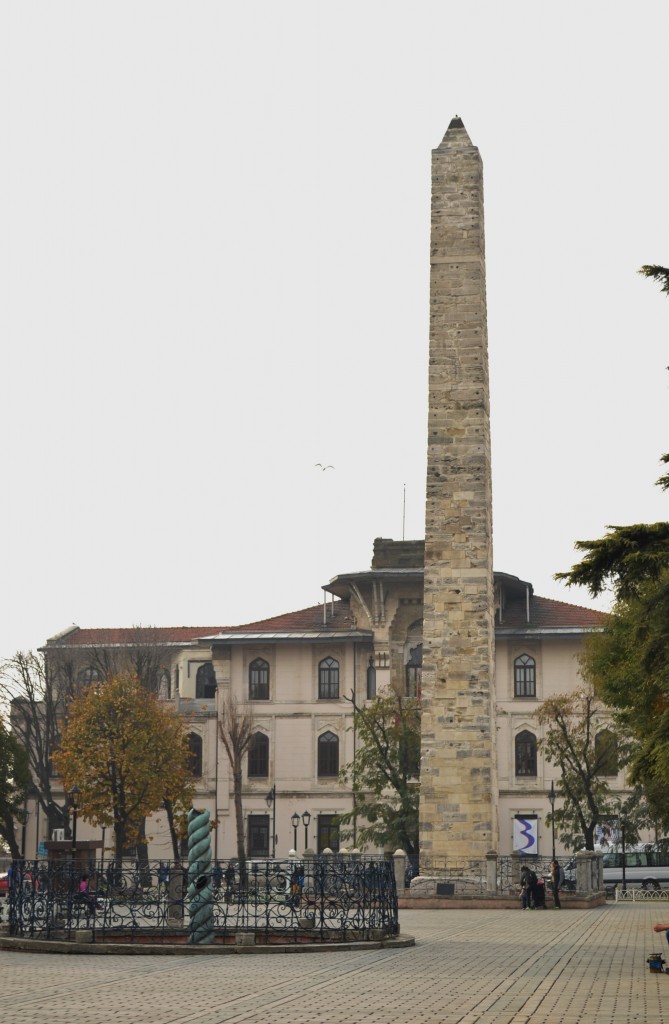
The Serpentine Column, the green winding structure reminds me of a barbershop pole. It is the oldest Greek monument in the city and located in the southern end of the spina. Made of 3 bronze serpents twisting around each other, their heads split off going in three directions at the top of the column. One of the serpent heads can be seen in the Istanbul Archaeology Museum.
This monument was erected to commemorate the victory of the Greeks against the Persians at Plataea in 479BC. Constantine brought this memorial to the Hippodrome from the Greek city of Delphi.
Behind the Serpentine Column is the Column of Porphyrogenitus dating back to the 10th century AD.
At the northern end of the Hippodrome’s spina is the German Fountain. A gift to the city, Germany’s Kaiser Wilhelm II presented it to Istanbul during his 1898 visit. The German Fountain was assembled in the Hippodrome at its current location in 1901.
At the time, the Kaiser was in the process of arranging a pact with the Sultan as it became certain that a conflict was building among the powers of Europe. In 1914, World War I commenced and the Sultan went into exile four years later because the ruling Ottoman had lost the war.
What amazed me most about the Sultanahmet district of Istanbul was the number of countries represented in its monuments. From the Greek Serpentine Column and Obelisk to the German Fountain, many nations have provided gifts to the city of Istanbul as displayed in its Hippodrome. Whether for political reasons or ancient trade routes, countries have pursued relationships with Turkey over hundreds of years as evident in its memorials.
Have you visited the Bazaars of Istanbul or the Sultanahmet district of this amazing city? I would love to hear about the attractions you visited and the events you experienced if you would kindly leave a message in the comments section below. Many thanks for reviewing my post about Istanbul’s Hippodrome, Grand Bazaar and the Spice Bazaar. Wishing you many Happy Travels!
What to See and What to Do:
Grand Bazaar
Beyazit Mh
34126, Fatih/Istanbul, Turkey
Telephone: +90 212 519 12 48
- Admission Fee: There is no admission fee.
- Hours: The bazaar is open every day from 9AM to 7PM with the exception of religious and public holidays.
- Amenities: Shopping, shopping and more shopping!
- Scenic View: The food stalls are beautifully decorated and are quite colorful.
- Length of Visit: 1 – 2 hours
- Tips for Your Visit: Don’t be afraid to barter. There are many spices available for purchase and are packaged for transport. Local items such as Turkish delight, baklava and caviar are also available for purchase. Dry fruits, confections, pastries, nuts, herbs coffees and teas are very popular purchases.
Where to Stay:
Fer Hotel
Mollafenari Mahallesi
Turbedar Sk. No. 12
34120 Fatih/Istanbul, Turkey
Telephone: +90 212 522 50 80
Where to Eat:
Cozy Pub & Restaurant
Alemdar Mh., Divan Yolu Cd. No. 60
34110 Fatih/Istanbul, Turkey
Telephone: +90 212 520 09 90
We loved sitting in the alleyway at red and white checked clothed tables. We ordered Efes beer and appetizers which included hummus, tzatziki sauce, pita bread and spring rolls. Ask your server to let you go up the small elevator for an amazing view of the Blue Mosque!
What to Eat:
- Baklava: made with puffed pastry, this dessert has chopped nuts (my favorite is pistachio), and is covered in honey.
- Gozleme is a type of bread that is shaped in a square and stuffed with various fillings such as meat, cheese, potatoes or vegetables and then cooked over a griddle. The cheese and spinach reminds me of spanikopita.
- Iskender Kebab: thinly sliced lamb is smothered in tomato sauce and served with traditional bread, then topped with yogurt and butter.
- Mezze is a sample of several small bites that may include yogurt with herbs, hummus, olives, dolmas (stuffed grape leaves), meatballs, eggplant, white cheese and warm bread.
- Simit is a fun street food bread that is similar to a pretzel.
- Turkish Apple Tea is absolutely amazing and was one of my favorite drinks while visiting Turkey.
- Turkish Delight: a delicious dessert is made up of dates, pistachios, hazelnuts, which is pink in color.
- Turkish Ice Cream, also known as Dondurma, is a little thicker in consistency, but it will not melt. A must try.
- Turkish Pizza is outstanding and tastes so fresh. Made from Turkish Pide (a type of pastry), it is similar to a flatbread with a variety of toppings.
- Turkish Ravioli: dumplings stuffed with beef or lamb served with yogurt.
What to Read:
- Istanbul: Memories of a City, by Orhan Pamuk
- The Bastard of Istanbul, by Elif Shahak
- My Name is Red, by Orhan Pamuk
- Istanbul Passage, by Joseph Kanon
Photo Guide for Istanbul:
- Galata Tower for views of Istanbul and the Bosphorus River
- The Blue Mosque for its amazing blue tiles
- The Rainbow Stairs at Sali Pazari Yokusu
- The Rooftop Terrace of Seven Hills Hotel for views of the Blue Mosque, Topkapi Palace AND the Hagia Sophia
- Rooftop Terrace of Cozy’s Restaurant for views of the Blue Mosque
- Inside the Hagia Sophia in the afternoon when the light shines in from the windows
- The Grand Bazaar
- Balat for colorful structures in the former Jewish neighborhood
For more information about the beautiful, exotic country of Turkey, check out the following links!
Topkapki Palace
The Blue Mosque
Hagia Sophia
Ephesus, Turkey: A Journey Back in Time
A Turkish Carpet Demonstration
Kusadasi and its Symbol of Peace
The Theater of Miletus
The Baths of Miletus
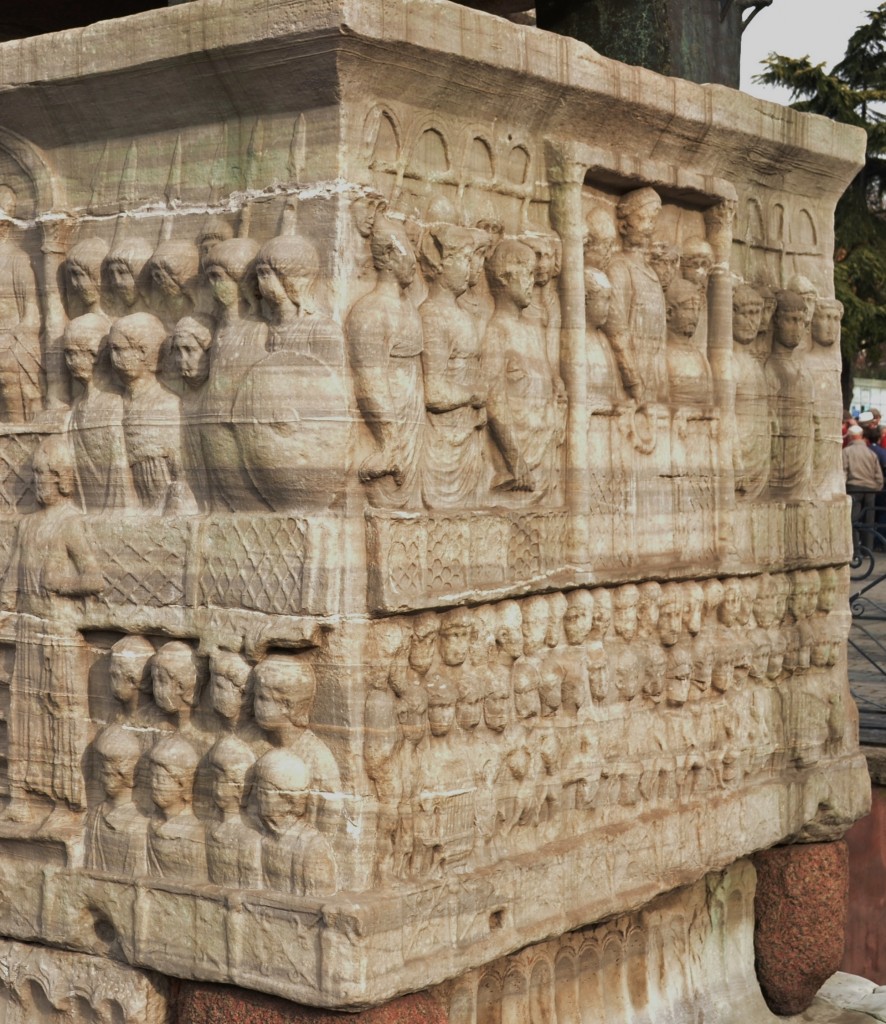
Intricate detail of the Obelisk in Istanbul
